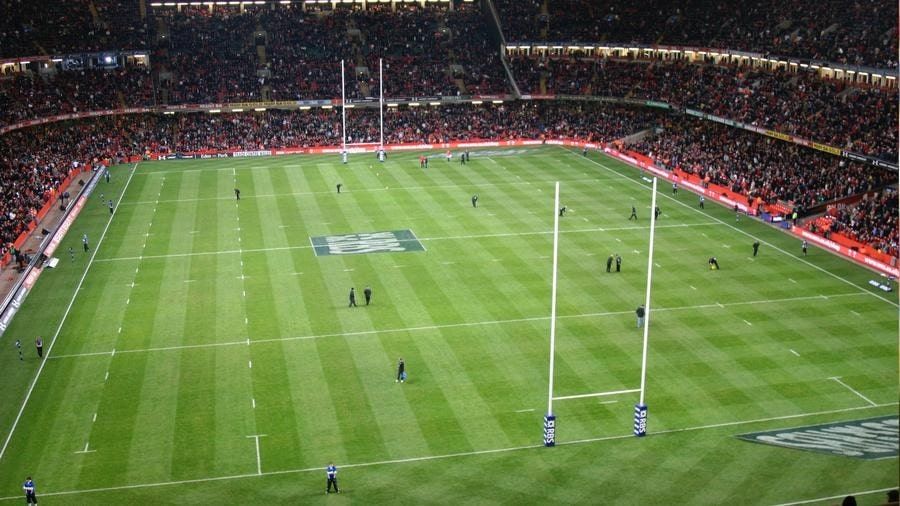
We collect basic website visitor information on this website and store it in cookies. We also utilize Google Analytics to track page view information to assist us in improving our website.
Most of us are familiar with sports like soccer and football, both of which are fine choices to play inside a dome.
Although rugby evolved from football and is rising in popularity, not as many people know this sport, how to play it, or what makes it a great choice for a dome. Let’s review what rugby entails, the basic rules, and why it is also a great indoor sport.
Rugby is a contact team sport that evolved from football. Like football, it is based on running on the field with a ball in your hands. The game is commonly played with 15 players per team, one oval-shaped ball, and one goal in the shape of an H on either end of the rectangular field. For the most part, rugby games are played in two halves, each spanning 40 minutes, with a short half-time in between and no timeouts.
Unlike football, players do not wear lots of protective equipment when playing rugby. They often just wear a uniform similar to soccer players.
A distinctive feature of rugby is the scrum to restart a game. It is often used as a way of getting a match going again after any infractions to the rules (discussed in the following section).
To form a scrum, eight of the forwards from each team bind together in three rows. The first row consists of three players (the loosehead, tighthead, and hooker). The second row is comprised of the two locks and two flankers. The final row is the eighth player, who takes the ball should his or her team gain possession. The team that did not cause the scrum (commit the infraction) starts it by dropping the ball in between the opposing teams, who then work to “hook” the ball and gain possession. This is a very technical portion of the game.
 |
 |
In rugby, any player can carry the ball, and there are no limits as to how far a player can carry the ball or in what direction they can carry it. They may also carry with one or two hands. The only restriction with regards to passing the ball is that you must do so across the field or backwards, but not forwards (or the game may stop). Kicking the ball is also permitted in rugby; however, this is a rare occurrence outside of kick-off.
Rugby players can tackle you, though certain leagues will play without physical contact (simply tagging others instead, for instance). Some playing rugby as a recreational game outside of official leagues may also prohibit tackling. A similar adaptation is flag football, in which you do not tackle but you can rip someone’s “flag” off their jersey. However, rugby is considered full contact unless otherwise stated regardless of playing context, so be prepared for tackling to occur during the game.
Rugby is particularly popular during the summer months when players have the use of a full green field and good weather conditions. However, similar to how an air-supported structure is a great place to play soccer and football, domes are perfect for rugby in moist weather conditions and throughout the entire year. The dome prevents the need to stop games during the winter, and you can play through other weather conditions that would have normally resulted in a cancelled game. Rugby in a dome also increases the availability of training programs, allowing more players to get into the game.
